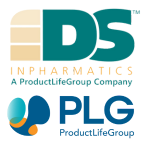Companies in the U.S. face unique opportunities and challenges in the global race to develop and market novel pharmaceuticals. To succeed, companies must navigate the European Medicines Agency's (EMA) regulatory framework for Investigational Medicinal Product Dossier (IMPD) applications and Marketing Authorization Applications (MAAs). A good comprehension of these processes is essential to unlocking the European market, a region with great potential but wrought with complex regulatory obstacles.
Understanding the EMA's regulatory framework
The EMA functions differently from the U.S. Food and Drug Administration (FDA). The EMA is a centralized agency that oversees the European Union (EU) member states. It represents a door to a diverse and expansive market for U.S. pharmaceutical companies. Thoroughly understanding the EMA's regulatory standards, which highlight stringent efficacy and safety evaluations, is critical for successful market entry.
The IMPD process at the EMA
For U.S. companies, filing an IMPD with the EMA is the initial step to assess their drugs in clinical trials within the EU. This process involves a detailed submission of preclinical drug data, manufacturing information, and the proposed clinical study protocols.
U.S. companies often struggle with matching their data to the requirements specific to EMA. To overcome this, companies should communicate with the EMA early and consider a partnership with local EU regulatory experts.
Filing an MAA with the EMA
The MAA is like the FDA's New Drug Application (NDA). It is a comprehensive dossier that necessitates robust clinical trial data, proposed labeling, and detailed information on drug manufacturing. U.S. companies must be prepared for a strict review process. Company Alpha (fictional) is a successful example, as it streamlined its MAA process by conducting EU-focused clinical trials and participating in early EMA consultations.
Strategic considerations for U.S. pharma
The European pharmaceutical market is competitive and dynamic. U.S. companies should perform comprehensive market analyses to discover unmet medical needs and patient demographics. Developing a regulatory strategy that aligns with the EMA's standards is not simply about compliance but comprehending the nuances of the European market and patient population.
Conclusion
Maneuvering through the EMA's regulatory landscape is complex, but it is an achievable goal for U.S. pharmaceutical companies. U.S. companies can expand their presence in the European pharmaceutical market by comprehending the EMA's processes for IMPD and MAA filings and developing strategic, market-aligned regulatory plans.
About DS InPharmatics 
DS InPharmatics (DSI) provides regulatory, technical, and project management consulting services to healthcare product companies that manufacture and/or market pharmaceuticals, biopharmaceuticals, and cellular and gene therapy products.
Since 2007 we have provided our clients with innovative strategies and exceptional quality work products intended to enhance product development, approval, and marketing presence. Whether advocating CMC strategy, directing CMC operations or developing CMC submission content that represent the best interests of emerging biotech, we focus on the critical CMC issues and build programs that enhance development.
In April 2021 we were thrilled to announce that DSI has just become part of ProductLife Group.
French-headquartered ProductLife Group (PLG) is well-known in the Life Sciences market. It has a track record of successfully managing global outsourcing programs and insourcing services for its international client base. The company is on a mission to help transform human health outcomes by optimizing regulatory affairs, safety & vigilance, and quality compliance for life sciences organizations worldwide.
The fit between our two organizations could not be more perfect. We will complement PLG's growing biotech services portfolio. US biotech sponsors recognize DSI as a leader in consulting for go-to-market strategies and RA pre-market consulting. At the same time, PLG has a strong reputation for managing end-to-end outsourcing of regulatory affairs and pharmacovigilance activities worldwide.
Our merger with PLG will harness our combined strengths, offering our clients on both sides of the Atlantic support with their developed drugs approvals and post-approvals compliance, plus advisory services on the best market strategies to deliver a rapid ROI on their development. Together we will offer our clients increased pharmacovigilance capabilities - including a QPPV; pharmacovigilance consulting; and a fully validated safety database - as well as complementary toxicology-related services; RIM/electronic document management services; and support for medical device regulatory requirements.
We see enormous potential in this new chapter for DSI and you, our clients. As a PLG company, we have the opportunity to become part of a global force in life sciences regulatory and compliance solutions and services, and we're incredibly excited to add our momentum to that effort.
Sponsored Content Policy: News-Medical.net publishes articles and related content that may be derived from sources where we have existing commercial relationships, provided such content adds value to the core editorial ethos of News-Medical.Net which is to educate and inform site visitors interested in medical research, science, medical devices and treatments.